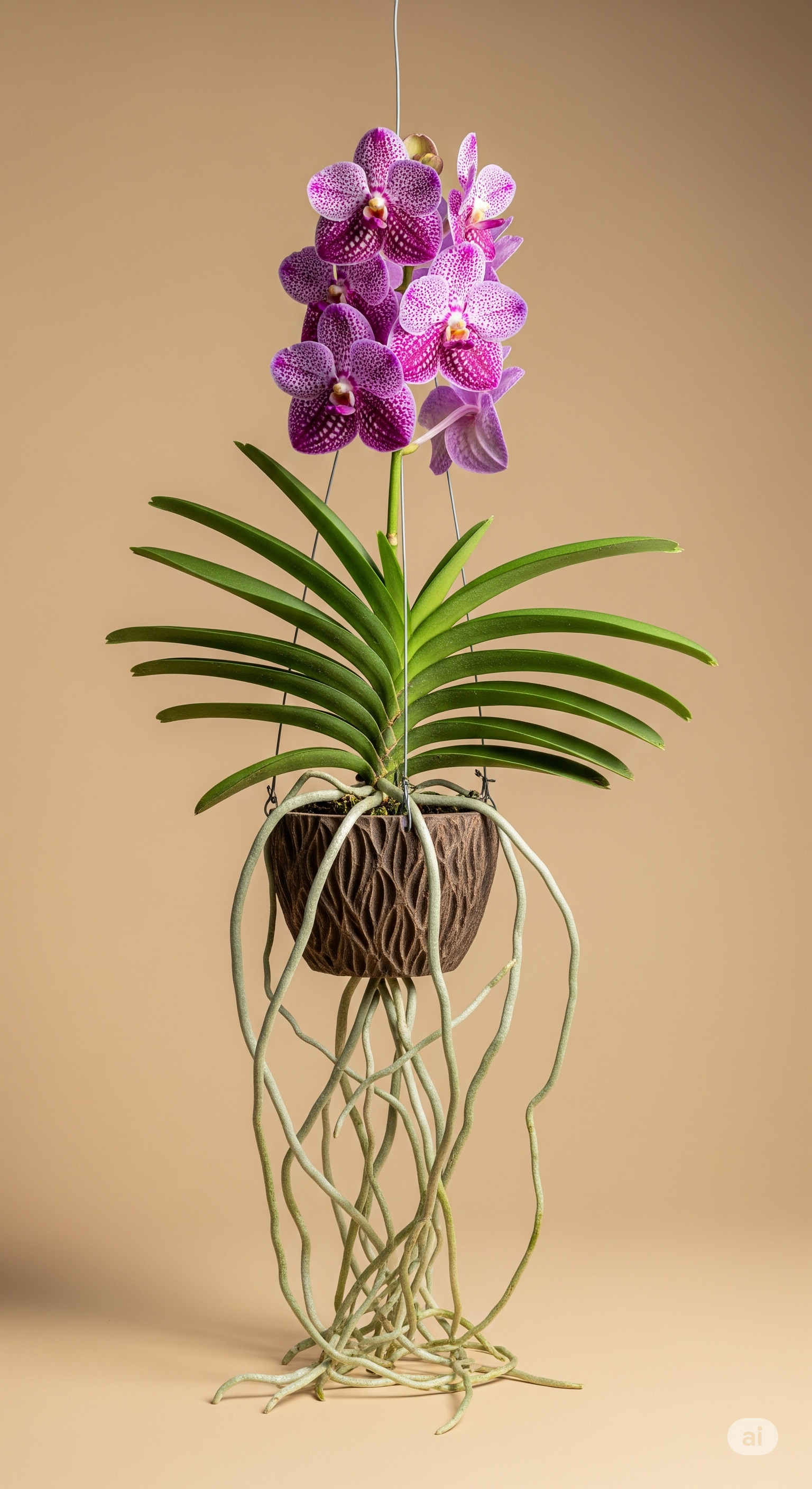Vanda Orchid

Scientific name: Vanda spp.
☘️ Toxicity: Safe for cats
☀️ Ideal light: Very bright, filtered sunlight (well-lit environment)
💧 Watering: Moderate to high; frequent watering for exposed roots
The Vanda Orchid is a spectacular epiphytic orchid, admired for its long-lasting, vividly colored flowers. It thrives with abundant light, high humidity, and excellent air circulation. Because it’s non-toxic to cats, it’s a safe and exotic choice for plant lovers sharing their homes with pets.
Essential care
- Light: Prefers strong filtered light (east or west-facing windows). Insufficient light reduces flowering.
- Water: Mist roots daily or soak them several times per week. They must turn green when hydrated.
- Humidity: High humidity (60–80%) is ideal; use humidifiers or place near water trays.
- Air circulation: Excellent airflow is essential to prevent fungal problems.
- Fertilization: Weekly, diluted orchid fertilizer (e.g., 20-20-20) during growth and flowering seasons.
- Temperature: Thrives between 18–30 °C (64–86 °F); avoid cold drafts and sudden changes.
Flowering and maintenance
- Blooming period: Typically twice a year, lasting 4–8 weeks each cycle.
- Post-bloom care: Remove spent flower spikes and maintain bright light to encourage new growth.
- Support: Can grow in hanging baskets, glass vases, or mounted setups without soil.
Pests and how to handle them
- Scale insects: Remove manually with cotton and 70% alcohol.
- Aphids and mealybugs: Use diluted neem oil or mild insecticidal soap.
- Fungal issues: Caused by excessive moisture and poor airflow; ensure roots dry between waterings.
Propagation
- Keikis (plantlets): Remove small offshoots once they have several roots and pot separately.
- Division: Possible with mature plants; each section must include roots and at least one leaf base.
Cat safety
- Classification: Non-toxic to cats.
- Best practice: Hang or place in elevated spots to prevent damage to delicate roots or blooms.
💡 Vandas are true air orchids — their exposed roots absorb moisture and nutrients directly from the air, making them both fascinating and low-maintenance when properly hydrated.
Frequently asked questions
- Why are the roots turning white or gray? It’s normal when dry — they turn green again after watering.
- Why is it not flowering? Likely due to low light or insufficient fertilization; increase exposure gradually.
- Can it live indoors? Yes, if placed near bright windows or under grow lights with good humidity.
Quick checklist
- ☀️ Bright filtered light
- 💧 Frequent watering or misting
- 🌫️ High humidity (60–80%)
- 🪴 No soil — roots exposed or lightly mounted
- 🐾 Safe for cats